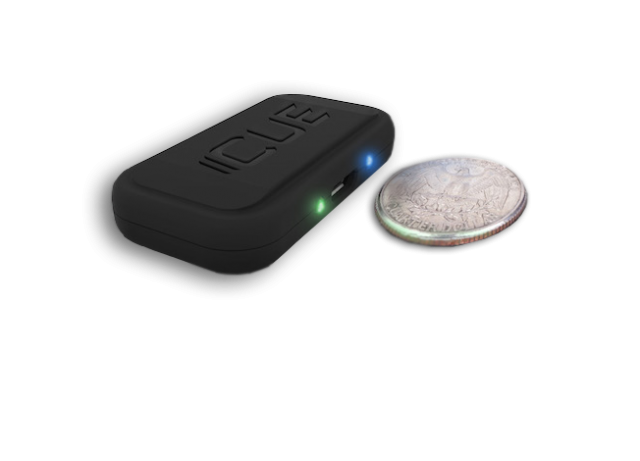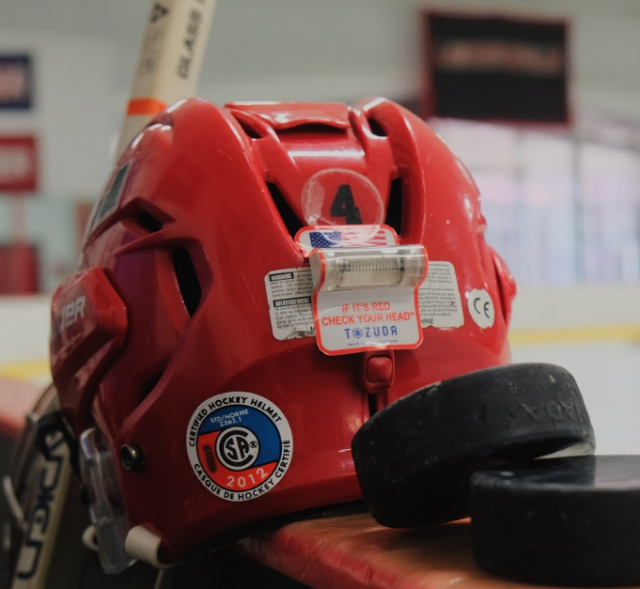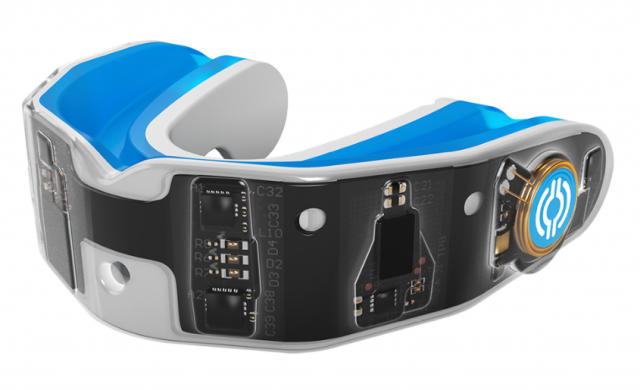Our experience at MomsTEAM Institute in field testing seven different impact sensor models over five football seasons, at both the high school and youth level, is that equipping players with sensors does not, as one critic has suggested, turn them into crash-test dummies. With appropriate safeguards in place to ensure that the privacy of the players is protected, and that access to the data the sensors generate is restricted to those who can use that data intelligently (such as an AT or coach), I continue to believe that the best way to refine and improve impact sensor technology, and educate players, coaches, parents, and ATs about their advantages, is, well, to use it. Sadly, the NFL's decision to stop using impact sensors, combined with the NFHS's negative stance on sensors, and fear instilled by NOCSAE that sensors attached to helmets might void the helmet manufacturer's certification, appear to have set back the kind of widespread use many of us in the sports safety community have been advocating.
Crowded market
Despite the challenges impact sensor companies continue to face, the number of products on the market has actually grown since I began following their development in the early 2010's. A March 2017 study in the Journal of Athletic Training lists nineteen impact sensors devices from seventeen different manufacturers, three of which were not yet commercially available. Since then several additional sensor products have been or are about to come to market.
Interestingly, both of the impact sensors which MomsTEAM featured in The Smartest Team documentary in 2012-2013- the Vector mouthguard sensor (then called the Hammerhead) and the Shockbox (then manufactured by a Canadian company, Impact Protective) - are not only still being manufactured, but are being used by more and more teams. According to Jesse Harper, longtime CEO of Athlete Intelligence ("AI"), the Vector is currently being used in helmeted sports such as football, hockey, and lacrosse by over 100 teams and 10,000 athletes from youth through NCAA Division 1, the most in the industry.
Not only does the Vector sensor measure the location and magnitude of each hit an athlete absorbs, sending the data to the sidelines via AI's proprietary ESPTM Chip Technology, but because the data can be time-synched to the millisecond with video (which a 2017 study in the British Journal of Sports Medicine recommends be part of a multi-modal, multi-time-based concussion evaluation process), it is particularly useful in evaluating and analyzing problematic impacts in real time.
By providing coaches with a "heat map" of each player's head and their exposure history over different time intervals and in different situations (practice versus games, preseason versus regular season) the Vector also furnishes coaches with actionable insights (what AI calls "Coachable Moments"). Our experience with the Vector, as part of our Smart Teams pilot program in Grand Prairie, Texas in 2014 and 20145, was very favorable. We equipped one hundred 6- to 12-year-old youth football players boys with Vector sensors donated by AI; during practices and games, a dedicated member of our team monitored the sensors, and was able to provide the coaches with data which they used to adjust player technique to minimize impacts.
In addition to offering a new and improved version of the Shockbox helmet sensor (a miniature wireless helmet sensor for hockey, football, snow sports and lacrosse and more, designed to immediately alert parents, coaches and athletic trainers to high magnitude hits), AI has recently brought to market a third product, the Cue Sport Sensor, featuring the latest advancements in impact sensing technology and designed for use in both helmeted and non-helmeted sports. As someone who has long advocated a holistic approach to sports safety, what I find particularly attractive about both the Cue and Vector is that they are paired with AI's Athlete Intelligence Platform to identify trends and improvement and for use as a teaching tool to build better, safer athletes. Future developments of the Athlete Intelligence Platform will embrace integrations with wearable technologies such as FitBit (from tracking sleep and nutrition to strength training) and external video feeds, allowing coaches to see the unbroken picture of each athlete's status on the field, and their potential moving forward.

Another sensor
that I like - although it is expensive ($150 per sensor, $200 for alert
monitor) and may not work for those players who do not like the fit of a Riddell
helmet - is Riddell's InSite sensor, a thin template of plastic which fits inside its
football helmets and connects to a full player management system. Backed by Riddell's formidable research and
marketing muscle as a leading football helmet manufacturer, the InSite, like other leading sensor
systems, alerts the sideline to high magnitude impacts sustained by players. The InSite Player Management Software (ISPM)
installs on both Windows and Mac computers and allows coaches and trainers to
create and edit a team roster, add and manage Alert Monitor and Player Unit
assignments, and review impact alert data downloaded from the alert monitors. Alert information can be reviewed and
exported as an Excel file for further analysis.
Promising newcomers
Joining such established players in the crowded impact sensor field as Athlete Intelligence and Riddell, are some promising newcomers.
One is Tozuda, a Philadelphia-based start-up headed by Jessie Garcia, a former rugby player, which has just introduced to the market (via a Kickstarter campaign) what it touts as a simple, affordable, and tamper-proof impact sensor product designed to attach to any helmet or

headgear and alert the sideline to impacts over 85 g's (which studies show are the ones most likely to cause concussion). Armed with an advanced engineering degree and some patented technology, Jessie and her team have built a low-cost sensor which, instead of using expensive electronics, alerts the sideline to a high magnitude impact by releasing a simple, non-toxic mix of liquid and dye which changes in color from clear to red when an impact exceeds the 85g threshold.
Some other sensor products that have caught my eye are two mouthguard-based products: the Prevent Impact Monitor (IM) mouthguard and the FITGuard. Manufactured by Edina, Minnesota-based Prevent Biometrics, a Cleveland Clinic spinoff, the Prevent boil and bite mouthguard ($99) and custom-fabricated mouthguard ($299) are the product of seven years of research and development and were introduced to the commercial market in 2017. David Sigel, Chief Marketing Officer, told me in an email that there were a "number of aspects of the Prevent system that make it fundamentally superior to any other head impact monitoring technology that we are aware of," first and foremost its accuracy. He asserted that the measurement accuracy and precision of other systems, particularly helmet-based systems, has been "very poor," and argued that a sensor is not "useful at all if it can't measure accurately and consistently," saying it would "be like having a scale that tells you that you might weigh 120, or maybe 170, or it could be 200. What good would that be?"
According to Sigel, Prevent Biometrics' mouthguard sensor has been validated to measure within +/- 10% accuracy -- much better than 10% actually in most impact locations -- in independent testing by leading test labs, not only measuring linear and angular acceleration accurately, but other key impact characteristics as well, including location, direction of the impact and impact count.
Another key distinguishing feature of the Prevent sensor system, according to Sigel, is that it is a complete system that makes the technology easy for athletic organizations and teams to implement and operate. "The IM Mouthguard connects via Bluetooth with our Team App, giving sideline personnel real-time visibility into impacts, and above threshold impacts that may require concussion assessment, right on an iPad or iPhone. All of the data then syncs to the cloud and detailed analytics are available in a web portal. Having accurate, detailed data available on an organization, team or player level really allows coaches to see opportunities for individual athletes to play safer, and instruct them accordingly. Finally, we have a charging case that wirelessly charges and sanitizes the mouthguard, and a team case that does that for up to 27 mouthguards at once."

To this point,
said Sigel, the Prevent mouthguards have only been sold to researchers, and the
company is only at the very beginning of introducing it to teams, "so it's
premature to talk about challenges we've encountered." Nevertheless, he said one challenge the
company faced was that while it was providing "incredibly valuable wearable
technology, ... it requires some behavior change by teams and players. For
instance, a lot of players like to cut their mouthguards down, or chew on them
constantly. Obviously, chewing on a device with over 100 electrical components
embedded in it doesn't work really well. It's kind of like when smart phones
came out. Your iPhone is amazing, but you can't drop it, swim with it or abuse
it! Further, teams and athletic trainers need to get used to having this data
available, and incorporating it into their operations." While the "Prevent system provides incredibly
insightful, and potentially transformational information, it's information that
was never before available, at least not with any reliability. They're going to
have to re-think how they do things, as they would with any new source of
sophisticated data."








